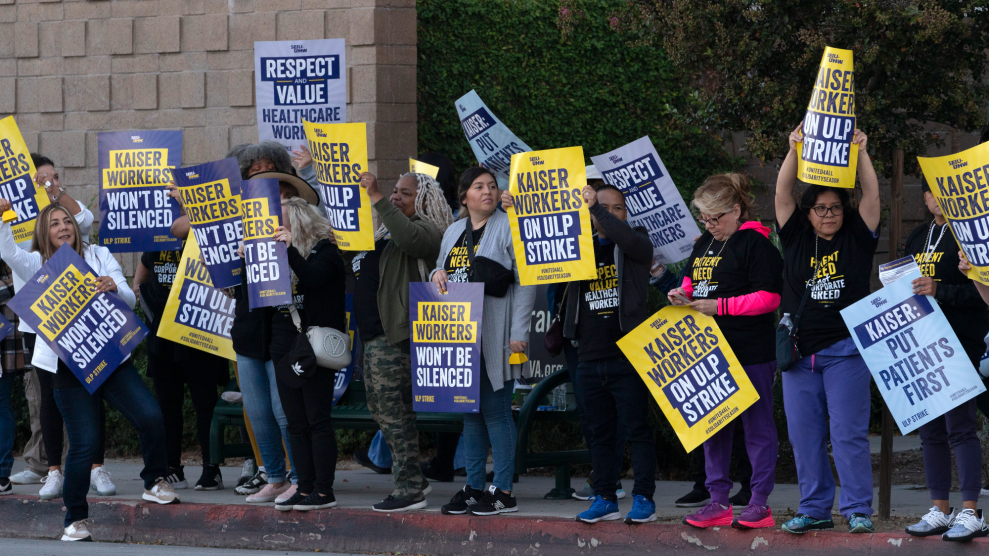
Blingcheese.com
We all know how the Internet has changed the porn business. The video clips available for free to any pimply faced teen with a modem make Deep Throat look positively PG-rated. But might the Internet also change the anti-porn biz? Once the exclusive province of evangelical prudes like Phyllis Schlafly and furious feminists like Catharine MacKinnon and Andrea Dworkin, the evils of pornography are becoming more of a mainstream political issue—if only because most of us, at some point, have stumbled upon a site like www.naked.com while innocently searching for a fruit juice company.
On Tuesday, a group of anti-porn activists and scholars arrived on Capitol Hill to brief members of Congress and their staffs and to call for beefed-up federal enforcement of obscenity laws. They weren’t there to fret about the pornographers of old: the loveable chauvinist Hugh Hefner and his scantily clad bunnies, or even the not-so-loveable-but-occasionally-principled First Amendment crusader, Hustler publisher Larry Flynt. No, they had come to alert Congress to websites like GagFactor.com, whose teasers alone are way more graphic than anything Hefner ever published, and whose content doesn’t portend a spirited First Amendment defense.
“The days of women wearing a coy smile and not much else are long gone,” Gail Dines explained to the congressional crowd. A women’s studies professor at Boston’s Wheelock College and author of the upcoming book Pornland: How Porn Has Hijacked our Sexuality, Dines has perused Gag Factor, and she described some of its content to the crowd—including a video of a woman with her head in a vice during oral sex. “Porn is an industrial product,” said Dines, who has studied the industry for 20-plus years. “I cannot believe how brutal it has become so quickly.” Gag Factor and their ilk, she added, are now the main source of sex education for boys.
Government prosecutors, the speakers said, haven’t kept pace with the industry’s rapid expansion. (In 1988, for instance, the adult entertainment industry released 1,300 porn videos. In 2005, it released more than 10 times as many.) Indeed, Patrick Trueman, a chief obscenity prosecutor at the Department of Justice under the first President Bush, stopped short of bashing Attorney General Eric Holder for going soft on porn. But he came mighty close, suggesting that the multibillion-dollar porn industry is a low priority for the Obama administration, even though the government typically prevails when it aims to shut down porn providers. Prosecuting the biggest fish, rather than the occasional small-fry consumer, Trueman suggested, would make a huge dent in the volume of online smut.
Christian-right groups have been complaining about porn forever, of course, and Trueman, a lawyer with the anti-gay Alliance Defense Fund, falls within that camp. But technology has made the right’s argument far more compelling, as the Internet has brought pornography to a far bigger and more vulnerable audience than ever before. The adult entertainment industry has fought to protect its burgeoning business by invoking the Constitution and arguing that its work is an expression of free speech. Its lobbying group, in fact, is called the Free Speech Coalition. And it’s true that the courts have found soft-core porn like Playboy, and the bookstores selling such wares, to be constitutionally protected. (For adults, that is. Legally, soft-core porn is labeled as harmful to minors.)
Courts have also struck down as unconstitutional previous attempts by Congress to curb Internet smut with restrictions like age-verification screens and bans on teaser photos. In one case, Supreme Court Justice Anthony Kennedy suggested that parents need only put filters on their computers if they wanted to protect their kids—apparently unaware of data showing that many parents are also downloading porn.
But according to Trueman, much of the explicit material found on the Internet these days isn’t protected speech but obscenity, which is prosecutable. That means there’s likely no First Amendment protection for Gag Factor and other sites that trade in close-ups of graphic acts, lewd genital displays, sexual violence, and all the gross stuff—bestiality, incest, excretory functions—that meets the legal definition of obscenity.
Making the point with blurry PowerPoint skin shots was Donna Rice Hughes, an “Internet safety expert” better known as the woman photographed sitting in Gary Hart’s lap as the then-presidential candidate sailed his boat, the Monkey Business, en route to the Bahamas. Hughes has since reinvented herself as an anti-porn activist. “For 15 years, children have been spoon-fed a steady diet of pornography,” she noted.
Hughes wasn’t just pushing the standard hysteria. Studies, she explained, have found that more than 40 percent of kids age 10 to 17 have checked out porn online, and many are checking out child porn, too. More compelling were her slides, used to illustrate just how easy it is to find porn simply by accident: Searching a generic term like “watersports” can turn up a host of sites featuring pictures and videos of women getting peed on. Then there’s the Boys.com/Boyz.com mix-up, which sends kids looking for a primer on teen fashion (the former) to a site offering an unfiltered view of graphic anal sex (the latter). According to Hughes, research suggests that the age of first exposure to this sort of visual is 11.
Hughes suggested that the porn industry is intentionally designing websites to lure in young users, too, in much the same way that the tobacco industry has: with cartoons. Consider “DisneyPornLand,” a site where kids can see Disney characters having sex, and freebies—graphic teaser clips available to anyone, regardless of age.
She then played a short clip of interviews she has done with teenagers talking about the effect of porn on their lives and relationships. Hughes chats with “Justin, 16,” who freely admits to having a porn addiction problem. She asks whether the girls he eventually did have sex with were anything like the ones he saw in the videos. “No, ma’am. The girls in real life are nothing like in pornography,” Justin replies. “I’ve never had a girl want to do the same stuff those women did.” The bemused look on his face is worth a thousand words.
Several academic types spoke about how pornography affects the brain, comparing it to drug addiction and positing that one reason Internet porn has gotten so hardcore so fast is that heavy viewers get desensitized. Mary Anne Layden, codirector of the Sexual Trauma and Psychopathy program at the University of Pennsylvania, described several patients whose lives were ruined by porn addictions—wherein what started off as a more benign nude-women surfing habit led them down the rabbit hole to becoming obsessed with kiddie porn, which led to jail sentences. And of course, there was the usual stuff about how porn hurts women and marriages.
But by far the most compelling argument came from Shelley Lubben, who during the 1990s performed under the name “Roxy” in such screen gems as The Cumm Brothers 3 and Beaver Hunt. She eventually left the business, found the Lord—Lubben showed up at the event with Bible in hand—and founded the Pink Cross Foundation, a nonprofit that offers support to adult industry workers.
Lubben described how her porn career left her with incurable herpes, papilloma virus, and ultimately cervical cancer. She is anemic, she added, due to hemorrhaging from reproductive injuries sustained during filming. “The last thing I want to do, people, is talk about porn,” she said, dabbing her eyes with tissues. “I have been hit, spit on, penetrated in every orifice imaginable.”
She also worked for a while as a prostitute: “At least with prostitution, you get a dinner sometimes.” Her story had the kid sitting next to me weeping. Beyond pimps and porn producers, Lubben spoke of an epidemic of suicides and other violent deaths of film stars, and talked forcefully about the doctors who collaborate with the industry to keep the performers “wasted” most of the time on prescription drugs. “This isn’t happening underground,” she said. “This is happening in America.”












